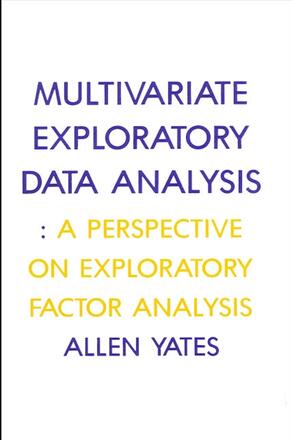Tables
Figures
Preface
Prologue PART I. INTRODUCTORY ALGEBRA, GEOMETRY, AND TERMINOLOGY
1. The Factor Analysis Model
Factor Analysis as a Special Case of Multivariate Multiple Regression
The Geometry of Factor Analysis in the Case of an Ideal Simple Structure
PART II. TRANSFORMATION OF PRIMARY FACTORS ON THE BASIS OF THURSTONE'S ORIGINAL MATHEMATICAL CRITERION FOR A BEST-FITTING SIMPLE STRUCTURE
2. Simple Structure Transformation
Thurstone's Mathematical Criterion for a Best-Fitting Simple Structure
Direct Geomin Transformation for Primary Factor Pattern Simplification
The Geometry of Primary Factor Rotation
The Algebra of Factor Pair Rotation
Solution for the Optimum Angle of Rotation
3. Practical Application of Direct Geomin Transformation
A Comparison of Direct Geomin and Direct Quartimin
Hard vs. Soft Squeeze Direct Geomin Transformation Strategies
Resistant Fitting Aspects of Direct Geomin Transformation
Sensitivity of Direct Geomin to Characteristics of the Starting Configuration
PART III. BOUNDING THE TEST VECTOR CONFIGURATION WITH HYPERPLANES THROUGH SIMPLE STRUCTURE TRANSFORMATION
4. Simple Structure Reconsidered
Beyond Factorial Purity and Ease of Interpretation
The Positive Manifold Assumption
A Source of Prior Information About Test Vector Configuration Location
5. Bounding Hyperplane Simple Structure Transformation
Toward Bounding the Test Vector Configuration with Hyperplanes In the Identifications of Primary Factors
Distinguishability Weighting
Complexity Weighting and the Associated Factor Contribution Matrix
Factor Size Scaling
Direct Geoplane Transformation
6. A Global Strategy for Bounding Hyperplane Simple Structure Transformation
Locating the Central Axis of a Polyhedral Convex Cone of Test Vectors
Transformation to Orthogonal Bounds
Iterative Recomputation of Distinguishability and Complexity Weights
Iterative Reweighting and Factor Size Scaling
An Orthogonal Initial Configuration for Direct Geoplane Transformation
7. Factorial Invariance and the Global Direct Geoplane Transformation Strategy
Analysis of Thurstone's Invariant 26-Variable Box Problem
Assessing Factorial Invariance Through Extended Vectors Projection of Direct Geoplane Factors
PART IV. DISTINGUISHING INVARIANT MAJOR COMMON FACTORS FROM UNSTABLE MINOR FACTORS OF GROUP OVERLAP
8. Alternative Approaches to the Problem of Extracting Common Factors
The Problem of Minor and Doublet Factors in Fitting the Common Factor Model
The Classical Statistical Approach to Fitting the Factor Analysis Model
A Perspective on the Maximum Likelihood Method of Factor Extraction
Convergence of Simple Iterative Techniques for Maximum Likelihood Factor Extraction
Alternatives to the Classical Confirmatory Approach to Fitting the Unrestricted Common Factor Model
Gauss-Seidel and Multidimensional Sectioning Methods of Fitting the Factor Analysis Model
Collinearity-Resistant Fitting of the Common Factor Model in the Presence of Local Dependency Outliers
9. Resistent Fitting and the Number of Factors Problem - Toward Fully Exploratory Factor Analysis
Fitting Lord's Highly Clustered Data
Practical Comparison of Collinearity-Resistant Fitting and Direct Geoplane Transformation with Available Approaches to Unrestricted Factor Analysis
Achieving Solution Invariance Through Dimensionality Reduction in Fully Exploratory Factor Analysis
An Alternative to Second Order Factoring
Accomodating Observed Data of High Dimensionality
Resolution of the Psychometric Vs. Statistical Conflict in Fitting the Factor Analysis Model
PART V. FULLY EXPLORATORY FACTOR ANALYSIS
10. Historical Perspective, Practical Application, and Future Possibilities
A Synthesis of the Classical Common Factor Theories of Spearman and Thurstone via Multivariate Exploratory Data Analysis
A Second Look at the Primary Mental Abilities
Toward an Understanding of Higher Integrative Mental Functioning
Epilogue: Release From the Burden of Confirmation in Fully Exploratory Multivariate Data Analysis
Appendix: Summary of Computational Steps
Bibliography
Index
